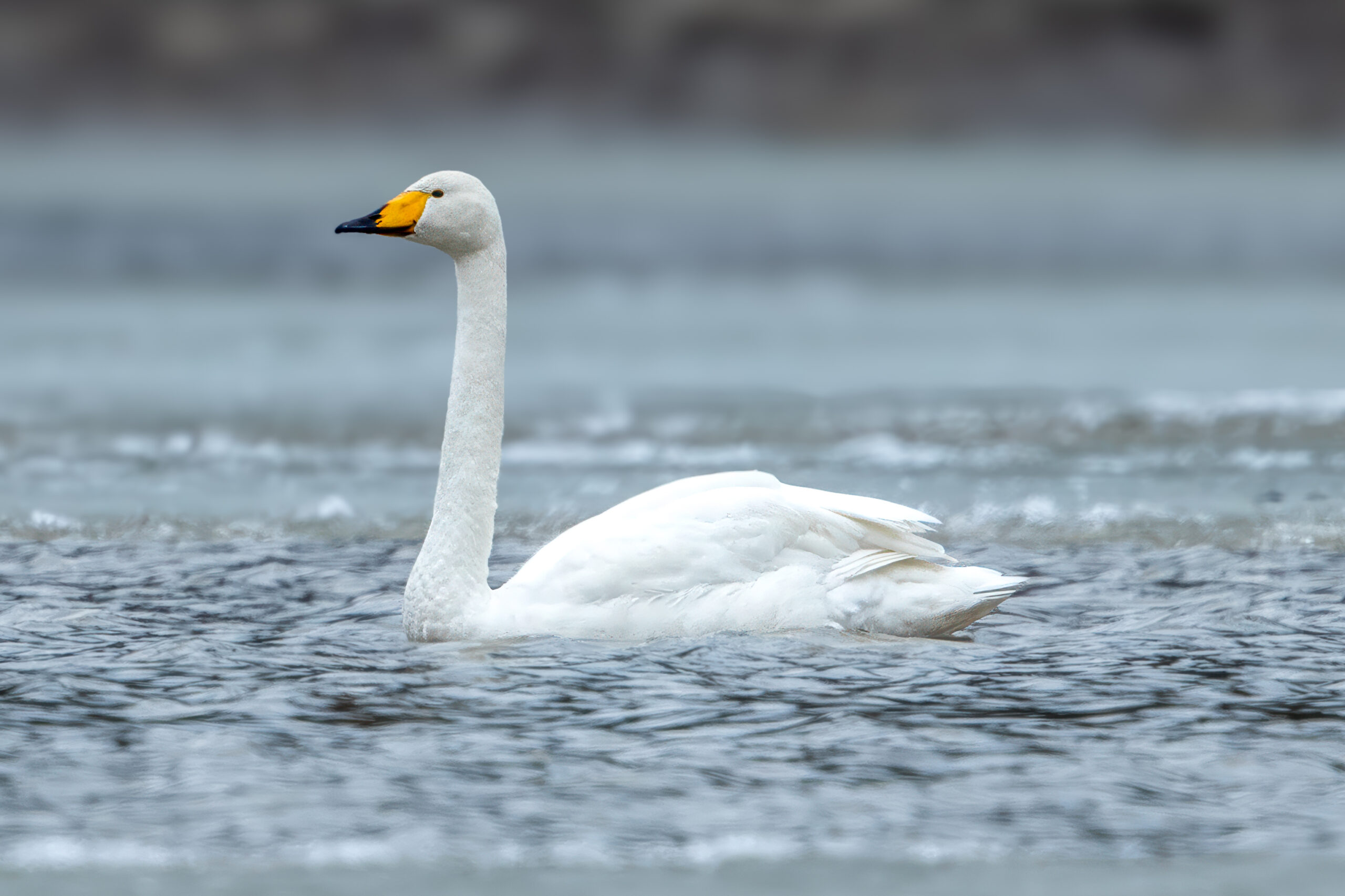Description
The mute swan (Cygnus olor) is a large, white waterfowl famous for its graceful presence on the water. It is native to much of Europe and Asia and have been introduced to North America. Adults can reach a length of up to 152 cm (about 5 feet) and a weight of 12 kg (26.5 lbs), making them one of the world’s largest flying birds. They are characterized by their long, curved necks, orange bills with a distinctive black base, and a pronounced knob above the bill. Unlike other swan species, mute swans are mostly silent, with occasional hissing when threatened. They create a unique whistling sound when in flight, which helps them communicate across distances.
Diet & habitat
Mute swans are found in a variety of water habitats, including ponds, lakes, and rivers, as well as coastal regions. They prefer areas with abundant vegetation, both under water and on land, which constitutes the majority of their diet, although they will also feed on small aquatic animals. They are known to upend in the water to feed on plants at the bottom, a common feeding behavior among swans.
Migration
Mute swans are partially migratory. Populations in colder regions, such as northern Europe and Asia, migrate to more temperate areas during winter, particularly to avoid frozen water bodies. However, those in milder climates, including parts of western Europe and the introduced populations in North America, are resident year-round.
Nesting
Breeding season begins in late March. Mute swans are monogamous and pairs display synchronized movements of heads and neck during courtship to strengthen bonds. Even though breeding pairs are known to stay together for life, changing of mates can occur, albeit infrequently. A breeding pair builds a large mound-shaped nest near the water’s edge, and they often reuse the same nest site for many years. The female lays an average of 5 to 7 eggs, which are incubated for about 36 days. Cygnets, which is the name for swan chicks, are born with a white down, which is replaced by grey feathers, and they fledge at around 4 to 5 months old. Mute swans are highly territorial during breeding season, aggressively defending their nests.
Relationship to humans
The mute swan has held a place of significance in human culture and mythology for centuries, symbolizing purity, beauty, and grace. In many parts of the world, these birds are associated with love and fidelity, given their lifelong monogamous relationships and the often-observed heart shape formed by a pair’s necks during courtship displays. This symbolism has made them a frequent subject in art, literature, and ballet, most notably in Pyotr Tchaikovsky’s Swan Lake.
Humans have also played a significant role in the expansion of the mute swan’s range, particularly through introductions for ornamental purposes in parks and estates outside their natural range, such as in North America. While these introductions have sometimes led to the establishment of thriving feral populations, they have also raised concerns about their impact on native wildlife and habitats. Mute swans are known to be aggressive towards other waterfowl, and their feeding habits can degrade water quality and vegetation.
Despite these challenges, mute swans continue to be protected and cherished in many areas, with their presence adding to the biodiversity and beauty of wetland habitats. Efforts to manage their populations and mitigate negative impacts on native species are ongoing, reflecting the complex relationship between humans and these majestic birds.
Status
The mute swan was hunted for several centuries, which led to its near-extinction in much of Western Europe and Great Britain, and it was ultimately saved by the large numbers being owned and semi-domesticated by landowners. It gained better protection in the late 19th to early 20th century. At present, the mute swan is considered to be of least concern by the IUCN Red List, thanks to stable and even increasing population numbers in many areas. However, they can sometimes face threats from habitat loss and pollution.










